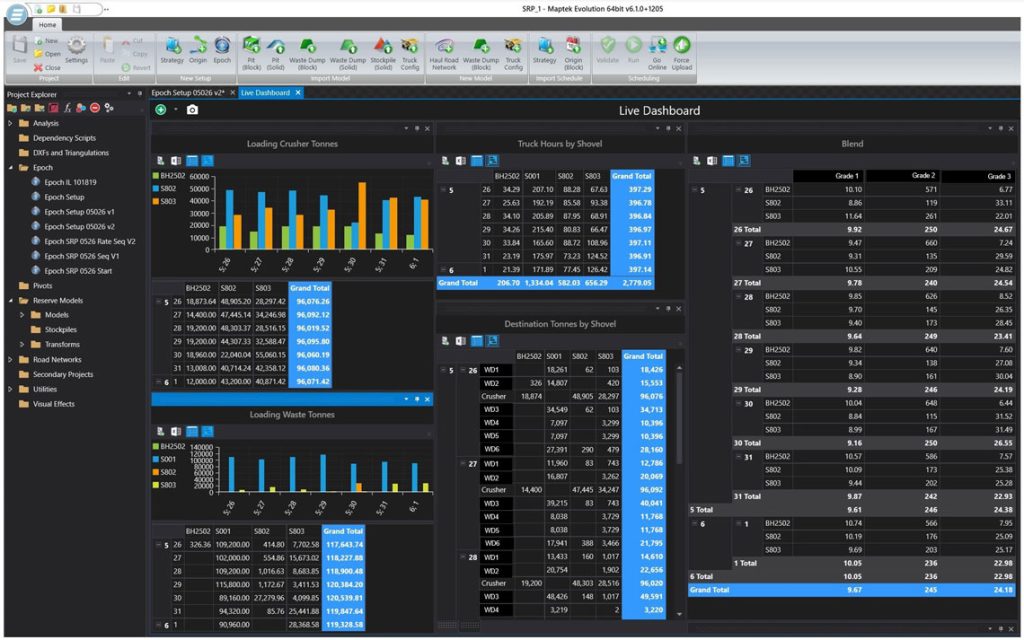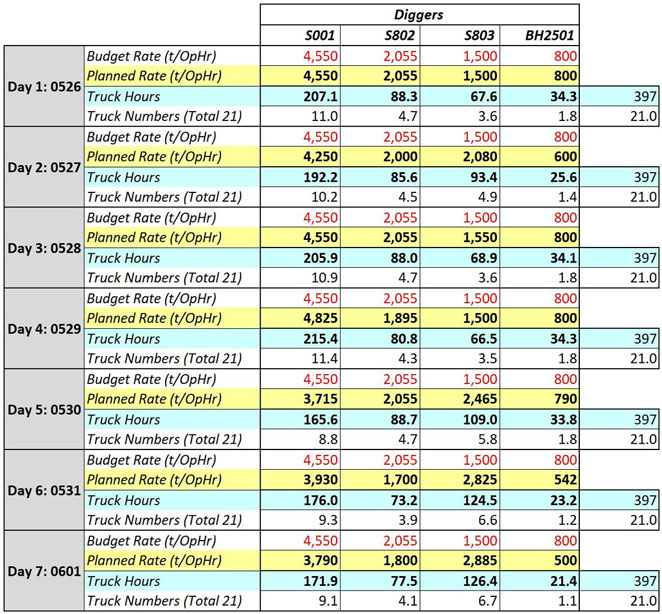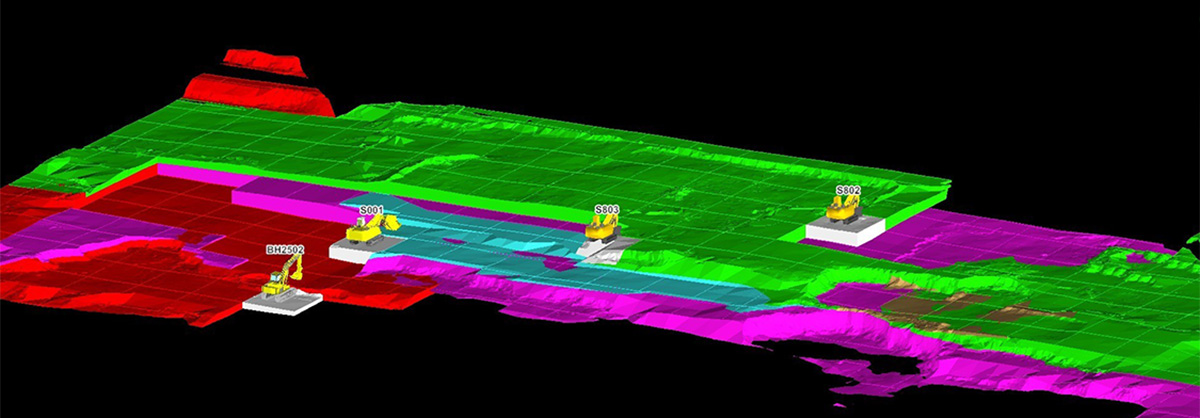March 2020 Issue Index
Paradigm shift in mine scheduling
Maptek has worked with mine planners to establish a new approach to scheduling that helps meet operational productivity goals.
Over the last five years, Maptek Evolution has been facilitating a rethink in traditional scheduling philosophies.
The power of the new short term planning module, Epoch, allows engineers to manage multiple mining activities, tasks and equipment, and apply different types of dependencies to define mining sequences.
The benefits of multi-objective scheduling have been revealed during a recent trial at a North American open pit mine.
The overall productivity of truck–shovel mining is largely determined by the availability and productivity of its haulage fleet, rather than the capacity of its loading fleet.
In general, the size of a truck fleet is a compromise between the number of units required to meet a budget or the average productivity when hauling material to a combination of the longest and shortest haulage paths.
In reality, haulage demand is dynamic, changing as loaders move from one location to another and trucks are dispatched to various ore and waste dumping locations.
Ore destinations are usually static, with a fixed crusher and predictable stockpile locations, whereas waste haulage distances and truck cycle times can vary widely and are difficult to predict accurately.

The common scheduling method in a truck–shovel environment is to set productivity as a constant, with a rate often assigned to each loading unit. However, when a fully trucked assumption is made, theoretical productivity calculations are found to be significantly higher than the assigned budget rates.
This process is an educated guess at the effect of a predicted blend of haulage paths that will be encountered during the schedule. There is a strong argument for a different approach and Evolution now makes this possible.
The constant input to the scheduling problem should be the total fleet truck-hours available.
From this constant, loading equipment productivity at the mining face should be calculated as a function of available truck-hours to meet targeted production tonnes, ore grade blends, and the mix of cycle times encountered in hauling to the various destinations.
Control over the scheduled quantities and grades allows schedulers to manipulate shovel rates within a period, in effect applying a total pool of truck-hours in pursuit of the planned targets.
The recent trial tested the new short term planning functionality released in Epoch at the end of 2019.
The scheduling scenario involved a series of designed, non-conforming benches in a trial section of the mine to be scheduled in 14 daily periods to meet ore, haulage, grade blend and dumping targets.
A mining block database was created from the bench surfaces and intersecting reserves block model. The run-of-mine ore was to be delivered to an in-pit crusher capable of 96 kt per day and conveyed from the pit to the processing plant.
Four production diggers were scheduled to meet the primary demand of the crusher capacity, with waste loading according to the available remaining truck hours. Twenty-one large haul trucks (360 t payload) were available with a total fleet capacity of 397 truck operating-hours per day.
An ore grade blend had to be met from the mining faces. Waste dumps were scheduled to receive suitable material types in various proportions according to the in-pit dumping goals.
One complicating factor in this trial was that both ore and waste were produced from certain mining blocks, requiring a selective mining operation. Each of the four diggers was sequenced through the available mining benches with consideration for the broad mix of ore, waste and split-blocks (ore and waste).

Haulage profiles were digitised to the centroid of each dumping location estimated for the two-week planning horizon. Each mining block in the database was coded with the haul distance to each of the seven dumping locations. From this data, historically calibrated truck productivity was calculated using a formula that included seasonal effects.
Epoch provides total control of the digger rates as a mechanism for meeting all of the production and grade targets while not exceeding the total available truck-hours.
The engineer sets the digger rates and steps to the end of the scheduling period (in this case the first day) to observe the result of changing rates on crusher tonnes, grades and total truck-hours. Balancing these three objectives is traditionally complex but can be done quickly and easily in Epoch.
In this trial, productivity was found to differ considerably from the constant budgeted rate initially assumed for each digger. The rates achieved by each digger in the fleet were determined period by period as the schedule objectives were met within the constant fleet haulage hours available.
Maptek continues to collaborate with mining customers to develop integrated mine planning and scheduling tools that align with their short, medium, long term and strategic life of mine goals.
- Generate more effective short term schedules in an environment which handles multiple mining activities, tasks and equipment, as well as different dependency types to define mining sequences.
- The new approach using Epoch recognises that total haulage fleet truck-hours available is the key input to dynamic scheduling of equipment across the various destinations in an operation.
- Engineers can control digger rates as a mechanism for meeting all of the production and grade targets while not exceeding the total available truck-hours.

